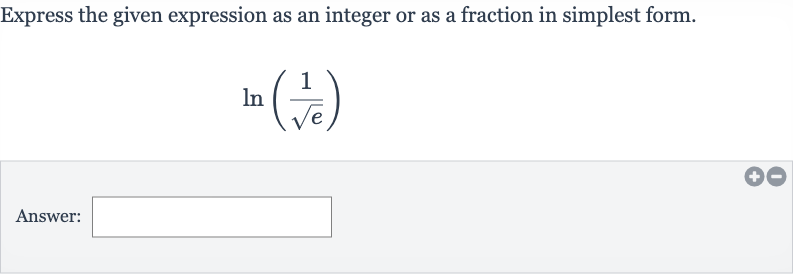AI tutor
Welcome to Bytelearn!
Let’s check out your problem:

Express the given expression as an integer or as a fraction in simplest form.Answer:
Full solution
Q. Express the given expression as an integer or as a fraction in simplest form.Answer:
- Understand the expression: Understand the given expression.We need to simplify the natural logarithm of the reciprocal of the square root of , which is .
- Apply logarithm properties: Apply the properties of logarithms.The natural logarithm of a reciprocal is the negative of the natural logarithm of the original value. Also, the natural logarithm of the square root of a number is one-half the natural logarithm of the number itself.
- Simplify : Simplify the natural logarithm of .Since the natural logarithm of is (), we can simplify the expression further.
